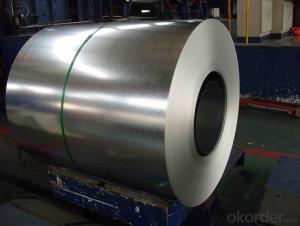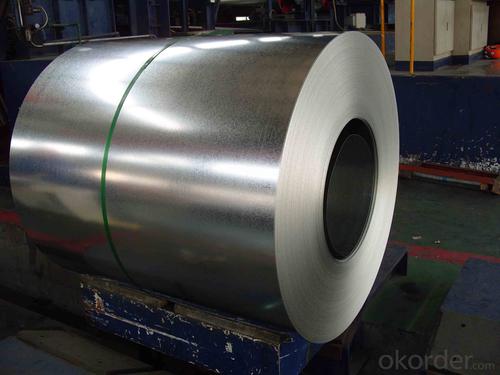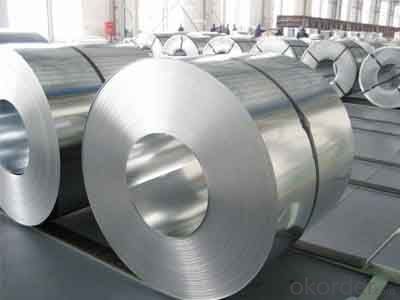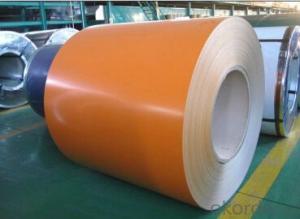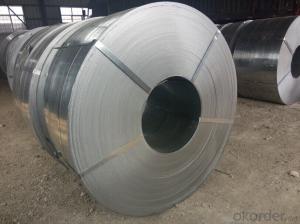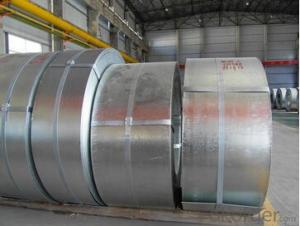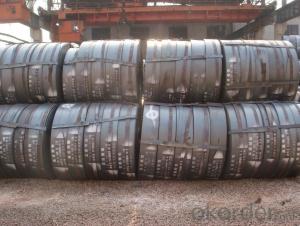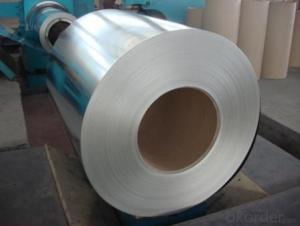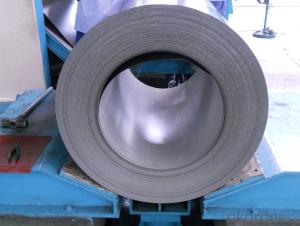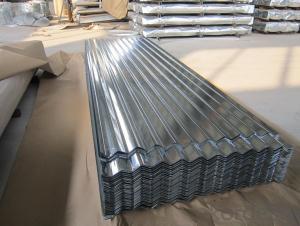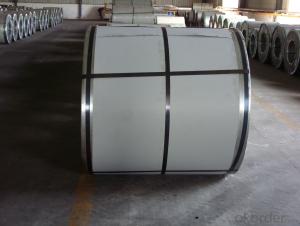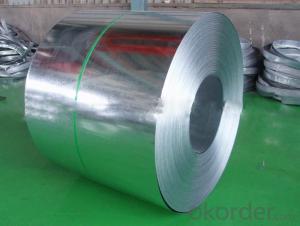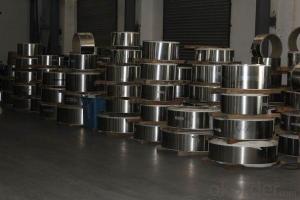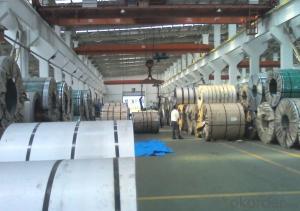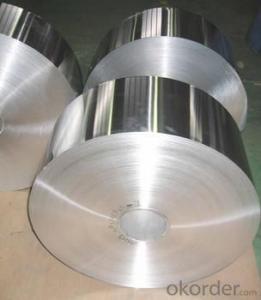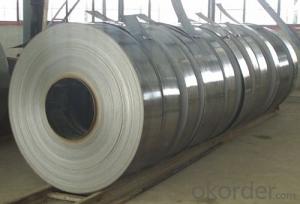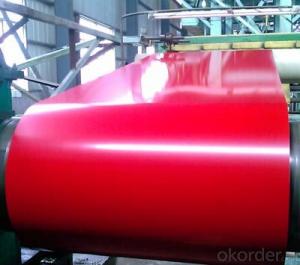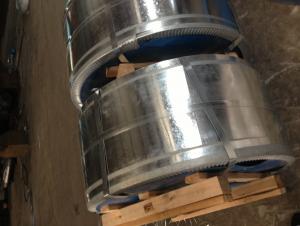Hot Dipped Galvanized Steel Coil/Hot Dipped Galvanized Steel Strips Coil
- Loading Port:
- Tianjin
- Payment Terms:
- TT OR LC
- Min Order Qty:
- 1000 m.t.
- Supply Capability:
- 100000 m.t./month
OKorder Service Pledge
OKorder Financial Service
You Might Also Like
Hot Dipped Galvanized Steel Coil/Hot Dipped Galvanized Steel Strips Coil Description:
Galvanized steel coil are widely used in the construction industry, as raw material for the production of corrugated panels, fencing products, drywall panel profiles, ventilation systems etc. Recommended for both outside and inside usage, galvanized steel has a high resistance to corrosion in different environments, due to a protective layer of zinc of 100 – 180 grams per square metre.
Hot Dipped Galvanized Steel Coil/Hot Dipped Galvanized Steel Strips Coil Specification:
Steel strips coils galvanized
Material: Q195, Q215, Q235, Q345B, SGCC, DX51D+Z
Thickness:0.75-4.5mm
Width:32-750mm
Zinc coating: 60-550gm2/
Main Feature of Hot Dipped Galvanized Steel Coil/Hot Dipped Galvanized Steel Strips Coil:
Hot-dip galvanized steel coils are produced by immersing steel in a zinc bath. An appropriate galvanizing process requires a pretreatment process during which the steel passes through different baths which prepare the surface for zinc coating. In this stage, chemicals are used to clean the surface of the steel. After the chemical treatment, the steel coils pass through a bath of melted zinc at temperatures around 460 ° C. The resulting uniform coating is finished through a process of skin-passing to provide smooth and shiny appearance of the finished product. To store for a longer period, the hot-dip galvanized coils can be delivered with a final oil coating, according to the customer’s demand.
Hot Dipped Galvanized Steel Coil/Hot Dipped Galvanized Steel Strips Coil Images:
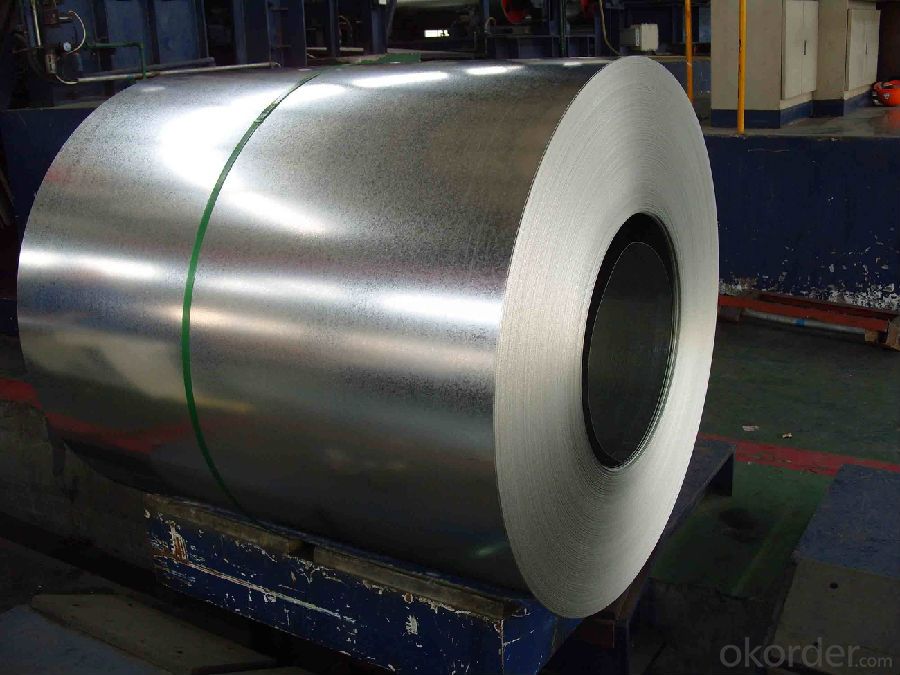 FAQ:
FAQ:
What certificates do you have for your products?
ISO
- Q: How are steel strips processed for surface coating?
- Steel strips are processed for surface coating through a series of steps. First, the strips are cleaned and degreased to remove any dirt or oil. They are then pre-treated with chemicals to enhance adhesion. Next, a coating, such as paint or zinc, is applied to the surface using techniques like hot-dip galvanizing or electroplating. Finally, the coated strips undergo curing or drying processes to ensure the coating adheres properly.
- Q: What are the different methods for shearing steel strips?
- There are several methods for shearing steel strips, including mechanical shearing, hydraulic shearing, and guillotine shearing. Mechanical shearing involves the use of a mechanical press or shear that cuts the steel strip using a blade. Hydraulic shearing, on the other hand, uses hydraulic force to operate the shear and cut the steel strip. Guillotine shearing is a type of mechanical shearing where a moving blade cuts through the steel strip in a straight line. Each method has its own advantages and is chosen based on factors such as the thickness of the steel strip and the required precision of the cut.
- Q: How are steel strips coated with a metallic coating?
- Steel strips can be coated with a metallic coating through a process called hot-dip galvanization. In this process, the steel strips are immersed in a bath of molten zinc, allowing the zinc to adhere to the surface of the steel. The strips are then removed from the bath and cooled, resulting in a durable and corrosion-resistant metallic coating on the steel.
- Q: How do steel strips perform in electrical circuits?
- Steel strips are not commonly used in electrical circuits as they have high resistance and poor conductivity compared to other metals like copper or aluminum. Therefore, they are not efficient in transmitting electrical signals and are typically avoided in circuit design.
- Q: How do steel strips contribute to formability in various applications?
- Steel strips contribute to formability in various applications in several ways. Firstly, steel strips are highly ductile, which means they can be easily bent and formed into different shapes without cracking or breaking. This formability allows manufacturers to create complex and intricate designs, making steel strips suitable for applications such as automotive body panels, appliances, and construction materials. Additionally, steel strips have excellent elasticity, which ensures that they can return to their original shape after being deformed. This property is particularly important in applications where repetitive bending or shaping is required, such as in the manufacturing of springs or hinges. Moreover, steel strips can be easily joined or welded together, providing further flexibility in their application. This allows manufacturers to customize the length and shape of steel strips according to their specific requirements, resulting in more efficient production processes and reduced material waste. Furthermore, steel strips offer good strength-to-weight ratio, meaning they possess high strength while being relatively lightweight. This characteristic makes them suitable for applications where a balance between strength and weight is crucial, such as in the aerospace industry. Lastly, steel strips can be coated or treated to enhance their formability and corrosion resistance. Coatings like galvanization or zinc plating provide an extra layer of protection against rust and corrosion, ensuring the longevity and durability of steel strips in various environments. Overall, the formability of steel strips plays a vital role in their wide range of applications. Their ductility, elasticity, joinability, strength-to-weight ratio, and ability to be coated contribute to their versatility and make them an ideal choice for many industries.
- Q: How are steel strips rolled?
- To achieve the desired thickness, shape, and surface finish, steel strips undergo a series of hot and cold rolling processes. The process commences with heating a large slab of steel above its recrystallization temperature in a hot rolling mill. It is then passed through rollers to gradually decrease its thickness. The resulting steel strip is then coiled and cooled. Next, the coiled strip goes through a cold rolling mill, which consists of multiple stands of rollers. This mill gradually reduces the thickness of the steel strip to the desired level. Cold rolling not only reduces thickness but also enhances surface finish, mechanical properties, and dimensional accuracy. During the cold rolling process, the steel strip undergoes continuous annealing to eliminate residual stresses and enhance ductility. Annealing involves heating the strip to a specific temperature and then slowly cooling it down. This process refines the microstructure of the steel, leading to improved overall quality. Following cold rolling and annealing, further processes such as skin pass rolling or temper rolling may be applied to the steel strip. Skin pass rolling involves a light reduction in thickness to refine surface finish and remove defects. On the other hand, temper rolling imparts specific mechanical properties and eliminates residual stresses by passing the steel strip through a series of rolls. Finally, the steel strip is typically coated or treated to prevent corrosion or enhance surface properties. This can be achieved through processes like galvanizing, which applies a layer of zinc to protect the steel from rusting. In conclusion, steel strips undergo a combination of hot and cold rolling processes to gradually reduce thickness and improve surface finish and mechanical properties. Additional processing and treatment are carried out to achieve specific characteristics and prevent corrosion.
- Q: How are steel strips tested for corrosion resistance?
- Steel strips are tested for corrosion resistance through a variety of methods to ensure their durability and longevity. One commonly used method is the salt spray test, also known as the ASTM B117 test. In this test, the steel strips are exposed to a highly corrosive salt spray environment for a specified period of time. This simulates the effects of corrosion that the steel strips may encounter in real-world conditions. Another method used for corrosion resistance testing is the electrochemical test. This involves immersing the steel strips in a corrosive solution and applying a small electrical current. The resulting measurements of corrosion potential and current flow provide valuable information about the material's resistance to corrosion. Additionally, some laboratories perform accelerated corrosion tests using specialized equipment. These tests subject the steel strips to extreme conditions, such as high humidity or temperature fluctuations, to accelerate the corrosion process. This allows researchers to evaluate the material's performance in a shorter time frame. Furthermore, visual inspection and microscopic examination can be conducted to assess the extent of corrosion or any signs of corrosion initiation on the steel strips. This can help identify areas of weakness and guide improvements in the material's composition or production processes. Overall, a combination of salt spray testing, electrochemical testing, accelerated corrosion tests, and visual examination are employed to comprehensively evaluate the corrosion resistance of steel strips. By conducting these tests, manufacturers can ensure that their steel strips meet the required standards and are capable of withstanding corrosive environments, thus ensuring their long-term reliability and performance.
- Q: How are steel strips processed for laminating?
- Steel strips are processed for laminating by undergoing a series of steps including cleaning, annealing, coating, and then being passed through a laminating machine where they are bonded with other materials to create a composite product.
- Q: How are steel strips processed for insulation?
- Steel strips are processed for insulation through a series of steps to ensure maximum effectiveness and durability. Firstly, the steel strips are cleaned and degreased to remove any impurities or contaminants that may hinder the insulation process. This is usually done through a combination of chemical baths and mechanical cleaning methods. Once the steel strips are clean, they are then coated with a layer of insulation material. This can be done using various methods such as hot-dip galvanizing, where the steel strips are immersed in a bath of molten zinc, or by applying a layer of epoxy or polyurethane coating. These insulation materials provide a protective barrier against heat, moisture, and external elements, preventing corrosion and enhancing the thermal efficiency of the steel strips. After the initial insulation coating, the steel strips may undergo further processing depending on the specific requirements. This can include additional layers of insulation material, such as polyethylene or PVC, which provide added protection and insulation properties. The steel strips may also be subjected to heat treatment processes to enhance their mechanical properties and improve their resistance to wear and tear. Finally, the insulated steel strips are typically inspected for quality assurance before being packaged and shipped to their intended destination. This involves checking for proper insulation coverage, thickness, adhesion, and overall coating integrity. Various testing methods such as visual inspection, adhesion tests, and thickness measurements are employed to ensure that the insulation meets the required standards and specifications. In summary, the processing of steel strips for insulation involves cleaning, coating with insulation materials, additional layers if necessary, heat treatment, and quality inspection. These processes are crucial in ensuring that the steel strips are effectively insulated and protected, making them suitable for various applications in industries such as construction, automotive, and electrical.
- Q: What is the impact strength of a steel strip?
- The ability of a steel strip to withstand sudden or dynamic forces without breaking or fracturing is referred to as its impact strength. This property measures the material's resistance to impact or shock loading and is particularly important in industries like automotive, construction, and manufacturing, where the strip may encounter high-velocity impacts. Several factors can influence the impact strength of a steel strip, including the type of steel, its composition, microstructure, and heat treatment. Steel strips with higher carbon content or alloying elements like manganese, chromium, or nickel generally exhibit higher impact strength. Moreover, specific microstructures, such as a fine-grained or tempered structure, can enhance the strip's resistance to impact. To determine the impact strength of a steel strip, standardized testing methods like the Charpy or Izod impact tests are typically employed. These tests involve subjecting the strip to a controlled impact force and measuring the energy absorbed or the resulting deformation. The results obtained from these tests help evaluate the strip's ability to withstand impact loading. In practical terms, a steel strip with high impact strength is less prone to cracking, fracturing, or experiencing permanent deformation when subjected to sudden or dynamic forces. This makes it well-suited for applications where impact resistance is essential, such as in structural components, machinery parts, or tools. Conversely, a steel strip with lower impact strength may be more susceptible to damage or failure under similar impact conditions. It is important to consider that the impact strength of a steel strip is just one of several mechanical properties that should be taken into account when selecting a material for a specific application. Other factors, including tensile strength, hardness, corrosion resistance, and formability, also significantly contribute to determining the overall suitability of a steel strip for a given use.
Send your message to us
Hot Dipped Galvanized Steel Coil/Hot Dipped Galvanized Steel Strips Coil
- Loading Port:
- Tianjin
- Payment Terms:
- TT OR LC
- Min Order Qty:
- 1000 m.t.
- Supply Capability:
- 100000 m.t./month
OKorder Service Pledge
OKorder Financial Service
Similar products
Hot products
Hot Searches
Related keywords
